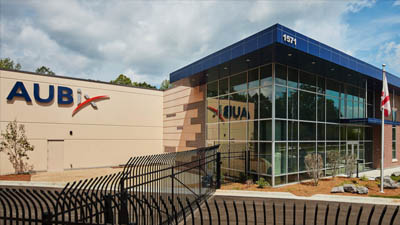 Technology is a double-edged sword. On one hand, there’s the explosive growth in the network systems integrated into the enterprise LAN. Add in the ubiquitous use of smartphones and mobile apps, and you’ve got quite a challenge in terms of managing and protecting the connected environment.
Technology is a double-edged sword. On one hand, there’s the explosive growth in the network systems integrated into the enterprise LAN. Add in the ubiquitous use of smartphones and mobile apps, and you’ve got quite a challenge in terms of managing and protecting the connected environment.
On the other hand, the diversity of connected devices and systems gives us more tools than ever when it comes to safeguarding lives and property. In an emergency, in-building wireless enables those who are trapped or endangered to call for help; security cameras can identify and locate intruders; and environmental sensors alert building occupants at the first signs of fire.
Yes, technology has created some challenges. But, when you really think about it, there’s no question that safeguarding lives is more important than improving productivity. If you can’t protect your employees and visitors, nothing else matters—which brings us to the importance of your network infrastructure.
Depending on how you look at it, your physical layer infrastructure is your first or last line of defense during an emergency. From the structured cabling network to the multiple connected systems—like in-building wireless, building security and lighting—virtually every aspect of your building’s physical layer infrastructure plays a role in protecting lives and property.
CLICK TO TWEET: CommScope has tips to protect your infrastructure in case of emergency.
Start with your in-building wireless network. Outdoor macro networks often have difficulty penetrating buildings. Getting a reliable connection—especially in places like elevators, basements and parking garages—may well depend on a reliable in-building wireless solution. In addition to public mobile traffic, these systems are increasingly expected to support dedicated public safety frequencies used by first responders.
Then there is the wide variety of devices that are connected throughout the enterprise and critical to minimizing damage in an emergency. These include video surveillance cameras, fire alarms and smoke detection sensors, access security controls, low-voltage lighting fixtures and more. All these systems rely on a very resilient cabling infrastructure—one that can both help prevent a crisis from erupting and minimize the damage should an emergency develop.
There are several steps you can take to help improve your network’s resiliency. For example, by supporting your connected devices with PoE or a powered fiber cabling system, you can help ensure critical security systems (including in-building wireless networks) remain operational even if you lose main power.
Just as PoE and powered fiber networks ensure power continuity, the fire rating of your network cable helps ensure connected systems remain operational for as long as possible. Therefore, it is critical that all infrastructure cabling meet or exceed minimum fire safety ratings. These can vary significantly by location, so it is important to consult the local authority having jurisdiction.
These are just a few of the areas to consider when it comes to improving the resiliency of your infrastructure—and safeguarding the people and assets within your buildings. For a deeper dive into the subject, take a look at this great CommScope resource.















